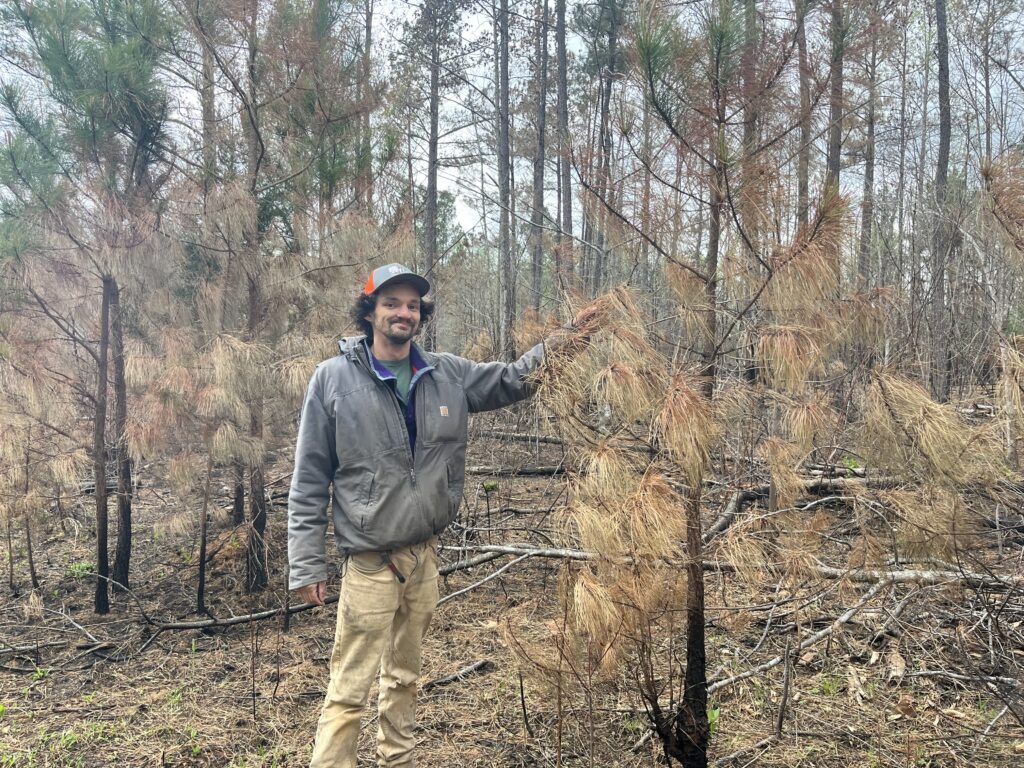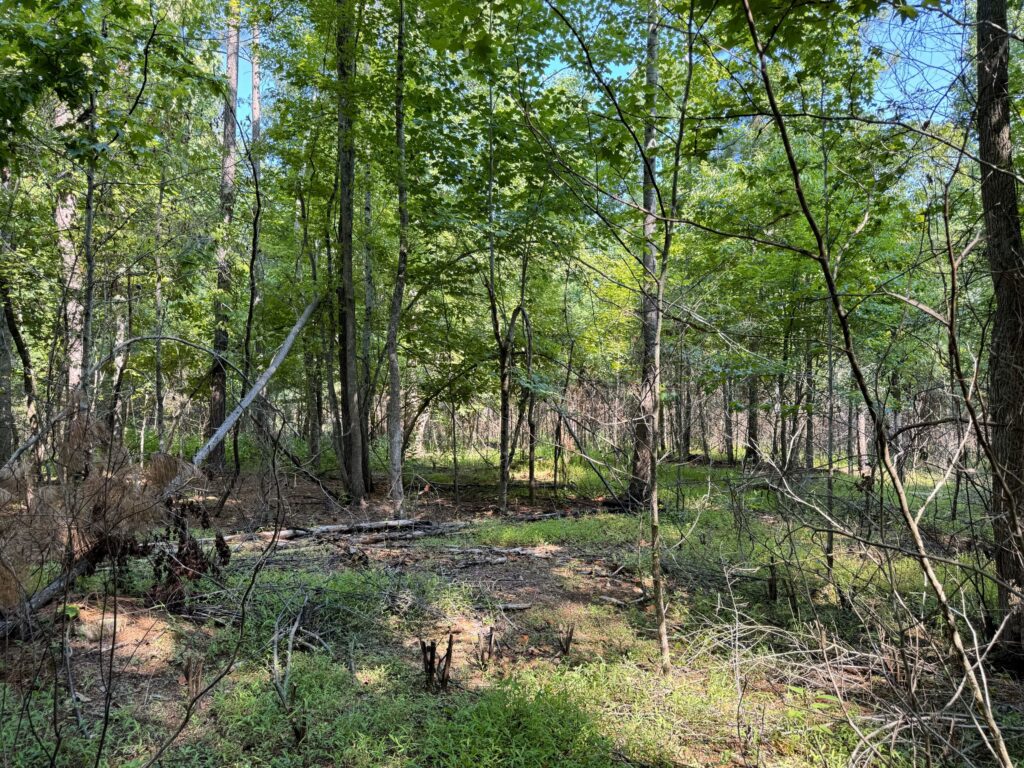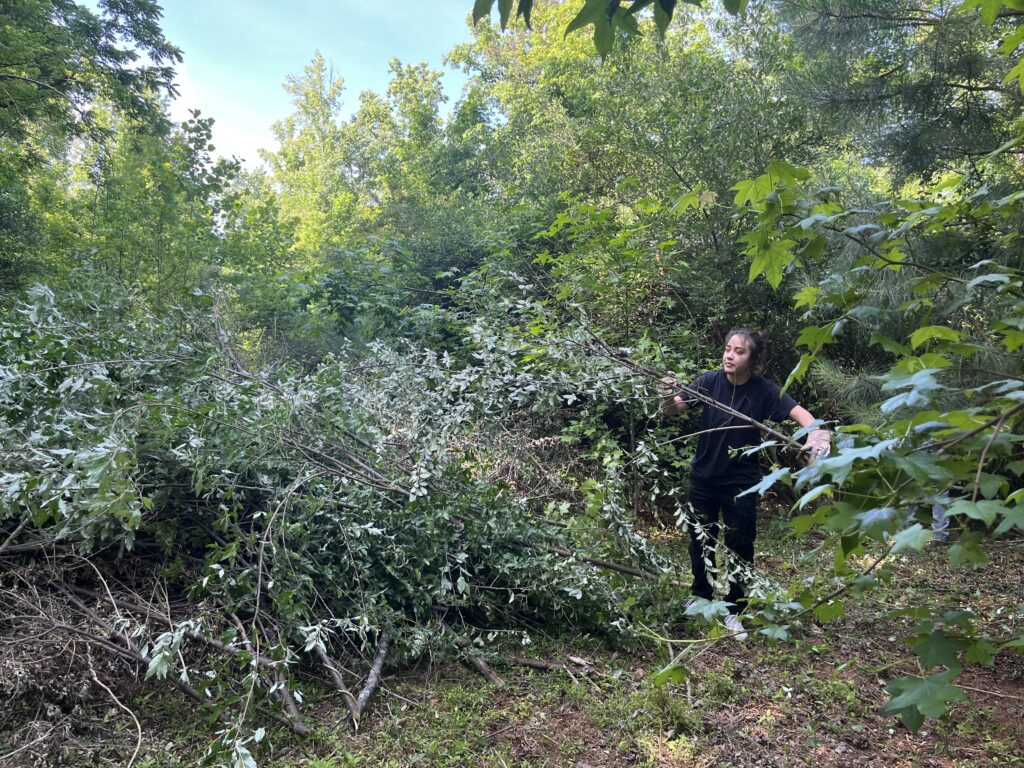By Brody Milotte, Communications Intern

Brumley Nature Preserve in Chapel Hill is one of my favorite destinations when I want to get outside. Purchased in 2010 with the help of state and local funds, the George and Julia Brumley Family Nature Preserve is one of the most popular nature preserves managed and protected by Triangle Land Conservancy. The mountain biking trails at Brumley’s south section are unmatched and birders come from all over the Triangle to observe wild birds. Other visitors come to enjoy the solitude amongst a variety of wildlife. Once within the Brumley forest, you don’t realize you are only 20 minutes from Durham!
Was there a fire here?
Yes, there was! Just as a doctor prescribes medicine, conservationists use fire to promote forest health. If you’ve noticed burn residue on trees or on the ground around Springhouse Loop, it’s completely intentional. In March of this year, a prescribed burn was completed by TLC land stewards across 40 acres of Brumley South. Immediately after the burn was conducted, the area appeared much less vibrant. However, now the area has rebounded with greenery, albeit far more open and sunlit than before.


History of fire in forest and wild land preservation
Prescribed burns play a significant role in ecological restoration. In fact, fire was once commonplace throughout the United States as Indigenous peoples used it to manage the land for centuries prior to European colonization. Prescribed fire has been used to maintain oak and pine savannas, clear brush, create wildlife habitat, clear land for agriculture, control pests and improve livestock grazing. When the Americas were colonized by Europeans, prescribed fires occurred less frequently, although they were still done by early colonial settlers. In the mid-19th century, fire suppression laws further reduced the usage of prescribed burns. With less burns, higher amounts of flammable plant material contributed to more frequent out of control wildfires, which caused more damage.
Managing invasive species and competing vegetation

Prior to our prescribed burn at Brumley South, autumn olive, Japanese stiltgrass, and tree-of-heaven were prevalent across wide swathes of the area. These plants were harming native species that were present at the preserve, crowding out native plants that many animals rely on. This prescribed burn was a two-step process, as the prevalence of autumn olive required a lot of invasive species removal work to be done before the prescribed burn could be completed. TLC’s Conservation Corps West, TriWild, and TLC Land Stewardship Associate West Luke Whiteside were instrumental in the removal of autumn olive prior to the prescribed burn.
Following the autumn olive removal, the burn, which was led by Luke, removed much of the excess invasive growth. However, due to the nature of invasive species, the issue has not been completely resolved. Japanese stiltgrass has resurged in the area and is still prevalent across wide swathes of the preserve.
Additional benefits of prescribed burns and monitoring
The prescribed burn also works to reduce the amount of vegetation present within the forest and create a more open environment. Did you know that the dense forests you’re used to seeing aren’t the most ecologically beneficial? When light reaches past the canopy onto the forest floor grasses, shrubs, and other shorter plants thrive. This can create a more biodiverse habitat and work to improve the overall health of the habitat for plants and animals. These types of habitats can sequester more carbon dioxide and reduce the effects of climate change.
Monitoring after a prescribed burn is crucial to ensuring its success and gaining information to be used in future burns. Land stewards look at several factors including the impact on non-target plant species, the amount of mineral soil exposed, and ground cover response.
Many invasive species require follow-up treatments. Autumn olive resprouts have had to be treated with herbicides to prevent new growth. Although herbicides have the potential to harm native species, in this instance it can be used to prevent a resurgence of invasive species and can be a useful tool in ecological restoration projects.
Triangle Land Conservancy is constantly working to improve ecosystem health and restore habitats to their native state. With proper monitoring and consistent prescribed burns, the overall health of the habitat is improved, and native species are offered the chance to thrive even when invasive species present a constant threat.
Looking to help TLC restore local habitats? Check out our VolunteerHub for upcoming opportunities to get involved in caring for local lands!
